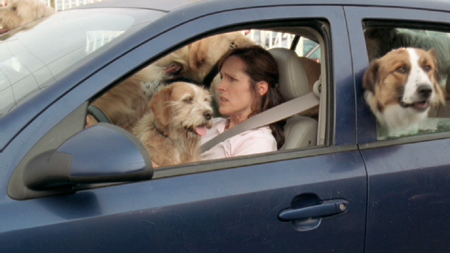
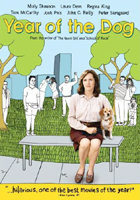 BUY IT AT AMAZON: CLICK HERE!
BUY IT AT AMAZON: CLICK HERE!
STUDIO: Paramount
MSRP: $29.99
RATED: PG-13
RUNNING TIME: 96 min.
SPECIAL FEATURES:
• Commentary by Mike White and Molly Shannon
• A Special Breed of Comedy: The Making of Year of the Dog
• Being Molly Shannon
• Mike White Unleashed
• Special Animal Unit
• Deleted scenes
• Insert reel
• Gag reel
• MovieFone Unscripted with Molly Shannon and Mike White
The Pitch
Who’s your best friend? Whoooo’s your best friend? Sit. Siiiiit. Now stay.
The Humans
Molly Shannon (A Night at the Roxbury), Laura Dern (Inland Empire), Regina King (The Boondocks), Josh Pais (Watching the Detectives), John C. Reilly (Walk Hard), Peter Sarsgaard (Jarhead), Liza Weil (Gilmore Girls)
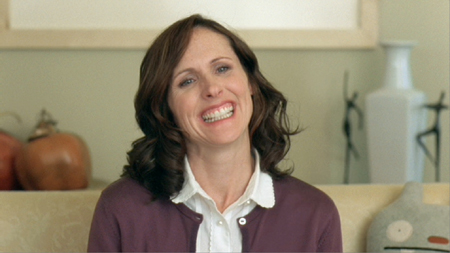
Mary Catherine Gallagher: Guidance Counselor.
The Nutshell
Peggy (Shannon) doesn’t have much of a social life. Not that her self-involved relatives and co-workers ever take notice. Her one love is a pet beagle named Pencil, and when she loses him a quest for fulfillment ensues. After briefly exploring the possibility of a romantic relationship, first with outdoorsy Al (Reilly) and then with spacey Newt (Sarsgaard), she styles herself as an animal-rights activist.
Year of the Dog states its terms with its first scenes: Peggy watches dogs at play in a park with exactly the same regard she gives the sight of her co-workers crowding around a box of donuts. She’s content to facilitate their happiness but has no inclination to participate in it.
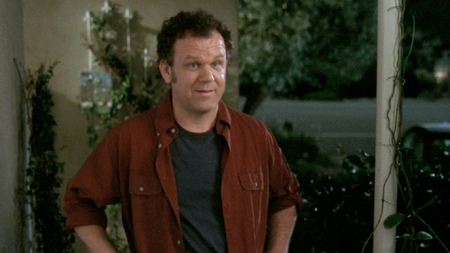
"What’s that, Judd? Back to character roles for a bit? Okey-doke."
The Lowdown
I’ll get this out of the way right off: I’m a cat person. Everybody says cats are fickle and aloof while dogs are loyal and selfless, but I’m not sure the canines aren’t working a long con. Think about it—cats are left to themselves when it comes to sleep and exercise, while dogs get houses, yards, even parks dedicated to them at humans’ expense. Forget to feed your dog, and you get a hungry dog. Forget to feed your cat, and Felix starts auditioning the houses next door. Dog ownership is co-dependent– when was the last time you heard of a group of people pushing for legislation on behalf of cats?
Mike White is known to indie fans for his offbeat character studies Chuck and Buck and The Good Girl, but his bread-and-butter has always been scripting mainstream TV fare like Dawson’s Creek. Here, in his first film as writer/director and freed from the strictures of formula, he’s gone and made an anti-formula film. Think Peggy will find love with someone who’s her ideological opposite? Or with someone whose fractured soul is a match for her own? See, those are the easy solutions, and White merrily shoots them down.
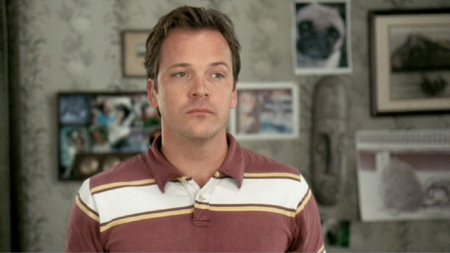
Unfortunately, he’s got nothing to put up in their place. Just as Peggy isn’t interested in other people, neither is, it turns out, the movie. Beneath the ironically cheery colors and postcard compositions, even beneath the portrait of a woman executing a slow fade from society and possibly reality, is the visualization of a world where other people really aren’t worth knowing. When Peggy goes off the deep end in her activism, the movie goes with her and stays there. Formally, this is interesting… but it’s not necessarily entertainment.
From The 40-Year-Old Virgin to Lars and the Real Girl, there seems to have been a recent increase in films dealing with the solitary lifestyle. Good or bad, these movies all have two things in common: a reluctance to investigate the circumstances that make a person disengage from socialization in the first place, and a nervous denial that such people ever have thoughts of a sexual nature.
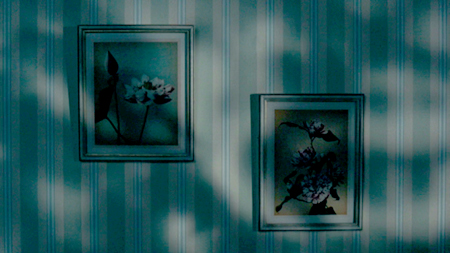
Get it? Wall? Flowers? Wallflowers! This means something.
Shannon, who is best known for her manic SNL characters, turns in a thoughtful, restrained performance, and is well supported by heavy hitters Dern, Reilly, and Sarsgaard. However, the best laughs go to Pais, as Peggy’s neurotic boss.
The Package
A rather listless commentary track is offset by the generous collection of featurettes. Most interesting is the brief look at the animal actors, who were called upon to perform some highly specific bits of behavior. The cover art, depicting Peggy as the only real person in a world of cartoons, reveals more about the film than is perhaps intended.
